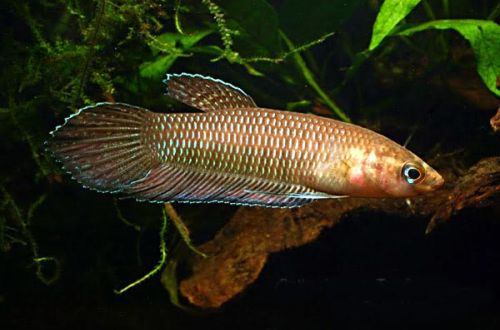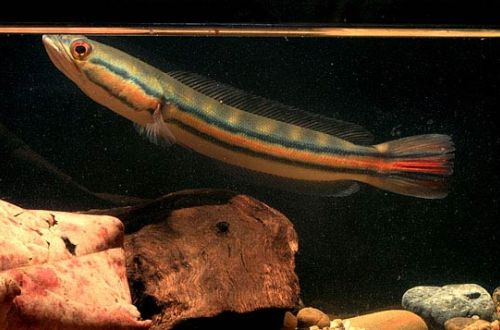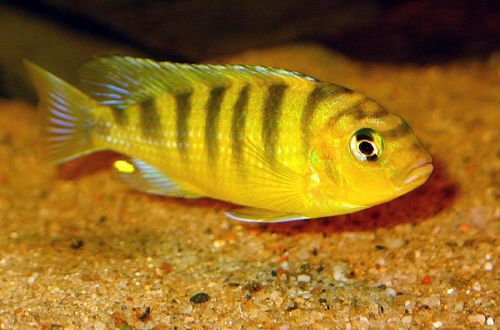
Betta Sim
Betta Sima or Cockerel Sima, scientific name Betta simorum, belongs to the Osphronemidae family. The fish is named after Thomas Sim, owner of Sindo Aquarium Pte. Ltd. (Jambi, Indonesia), which began to export this species for the first time. Belongs to the group of fighting fish and fully justifies its affiliation. Males are quite temperamental towards each other, however, it does not apply to other species. Relatively easy to keep and breed, will not cause big problems for experienced aquarists.

Contents
Habitat
It comes from Southeast Asia from the central part of the island of Sumatra. The natural habitat covers the territories of the Indonesian provinces of Jambi and Riau. Inhabits the swampy basin of the Indragiri River, which flows through dense tropical forest. A typical biotope is a dimly lit reservoir, the water in which has a rich brown hue due to the high concentration of humic acids and other substances released during the decomposition of plant material. The bottom is covered with a layer of fallen leaves, branches, through which numerous tree roots pass. Depending on the season, the water level can drop dramatically, turning the reservoir into tiny puddles.
Brief information:
- The volume of the aquarium – from 70 liters.
- Temperature – 25-30°C
- Value pH — 3.0–6.0
- Water hardness – 0–10 dGH
- Substrate type – any dark
- Lighting – subdued
- Brackish water – no
- Water movement – little or no
- The size of the fish is 8–9 cm.
- Food – any food
- Temperament – conditionally peaceful
- Content – in a small aquarium singly or in a pair of male / female
Description
Adults reach a length of 8-9 cm. Males look slimmer, the tips of the fins and tail are elongated, and there are turquoise shades in the color. The females seem larger, the body is more massive, the color is gray.
Food
In nature, they feed on small invertebrates, crustaceans and other zooplankton. Cases have been noted when fish jump out of the water to grab prey (small insects) from the surface of overhanging foliage and branches.
Acclimatized fish and those that have been living in the artificial environment for several generations have adapted to the intake of alternative products in the form of dry food (flakes, granules). A good addition would be live or frozen food from brine shrimp, daphnia, bloodworms, etc.
Maintenance and care, arrangement of the aquarium
The optimal size of the aquarium for one or two fish starts from 70 liters. The design can be arbitrary, but the fish will look most harmonious in an environment that resembles a natural natural reservoir. Natural snags are placed on a dark substrate, shade-loving plants, mosses and ferns, or their artificial counterparts, are planted. Subdued lighting is installed. Shading is also achieved by using floating plants. The dried leaves of some trees, previously soaked and added to the bottom, will emphasize the design. In addition, they will serve as a source of humic acids, which color the water in the brown color characteristic of swamps. Read more in the article “Which tree leaves can be used in an aquarium.”
Successful long-term maintenance of the Sima Cockerel depends on maintaining stable water conditions within an acceptable range of temperatures and hydrochemical values. The latter have low pH values and low carbonate hardness. For this reason, beginners in the aquarium trade may encounter problems with water treatment. Achieving the desired stability is achieved through the smooth operation of the installed equipment and the regularity of the mandatory maintenance procedures for the aquarium. At a minimum, it is necessary to replace part of the water with fresh water weekly and remove organic waste (feed leftovers, excrement) in a timely manner.
Behavior and Compatibility
In various sources, there is conflicting information about the behavior of Betta Sim. Some consider them overly aggressive towards relatives – this primarily applies to males. Others, on the contrary, indicate their peaceful disposition. In both cases, there is some truth. In small volumes, with a lack of space, males begin to compete for territory and the attention of females. However, their “quarrels” never lead to injury. In a small aquarium, it is recommended to keep only one male in the company of a female. In a spacious tank, the size of the group can be commensurate. With respect to other fish, no signs of aggression were noted, Bettas are perfectly compatible with species of comparable size that can live in similar conditions.
Breeding / breeding
In the breeding season, the fish build foam-air nests on the surface of the water among thickets of floating plants, under a large leaf, or in shelters like a cave. The latter can be an appropriate decorative object, or an ordinary ceramic pot turned over on its side, a fragment of a PVC pipe, etc.
During construction, the male does not allow the female and other fish to approach him. When everything is ready, he proceeds to active courtship. Spawning itself is accompanied by a kind of embrace, during which the fish wrap themselves around each other. At the moment of climax, 5-20 eggs are released and fertilized at a time. Then the eggs are carefully placed in the nest. The male stays next to the clutch to protect it, while he will not tolerate any of his relatives nearby, including the female. In a small aquarium, you will have to temporarily transplant other fish. The incubation period lasts 3-4 days, for a couple of days the fry that appear will feed on the remnants of the yolk sac. Fry for their safety should be placed in a separate container with identical water conditions.
Fish diseases
The cause of most diseases is unsuitable conditions of detention. A stable habitat will be the key to successful keeping. In the event of symptoms of the disease, first of all, the quality of the water should be checked and, if deviations are found, measures should be taken to correct the situation. If symptoms persist or even worsen, medical treatment will be required. Read more about symptoms and treatments in the Aquarium Fish Diseases section.





